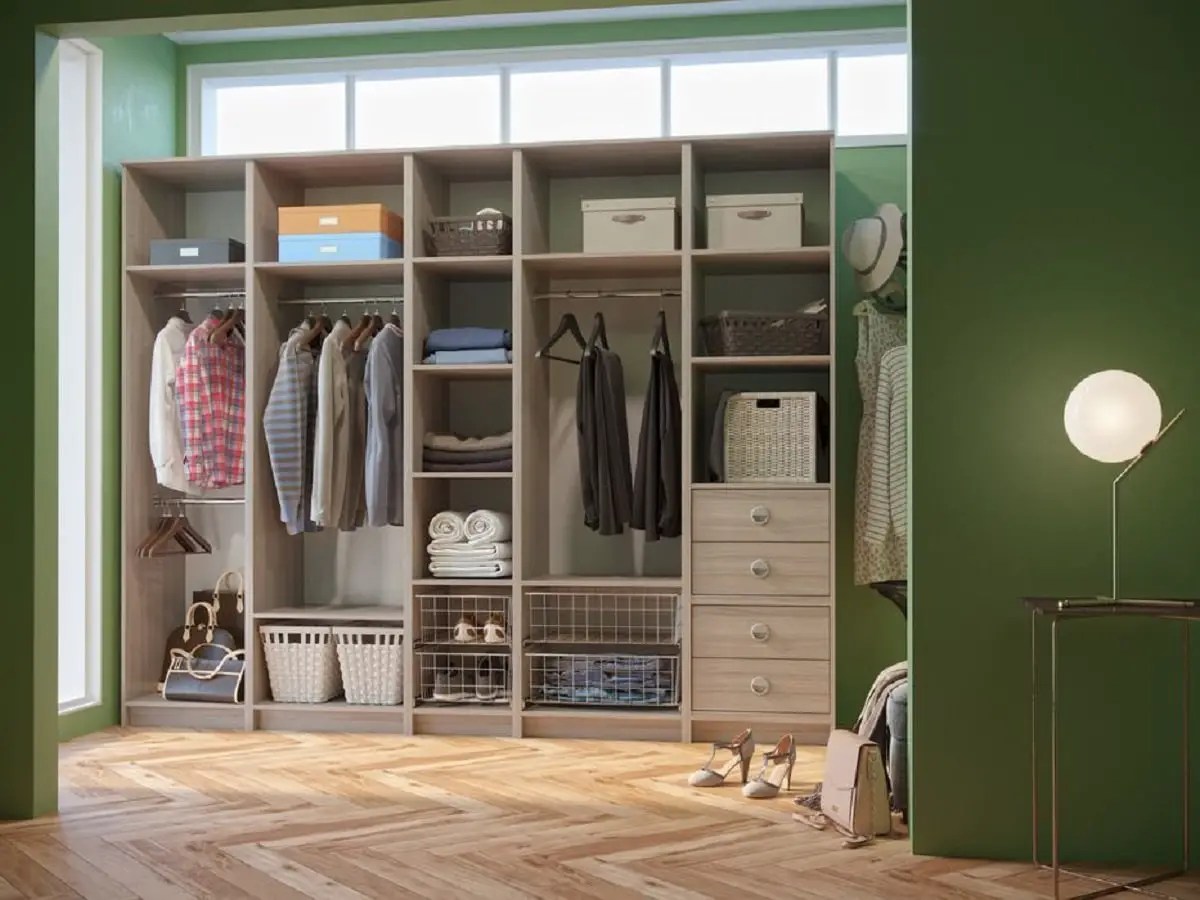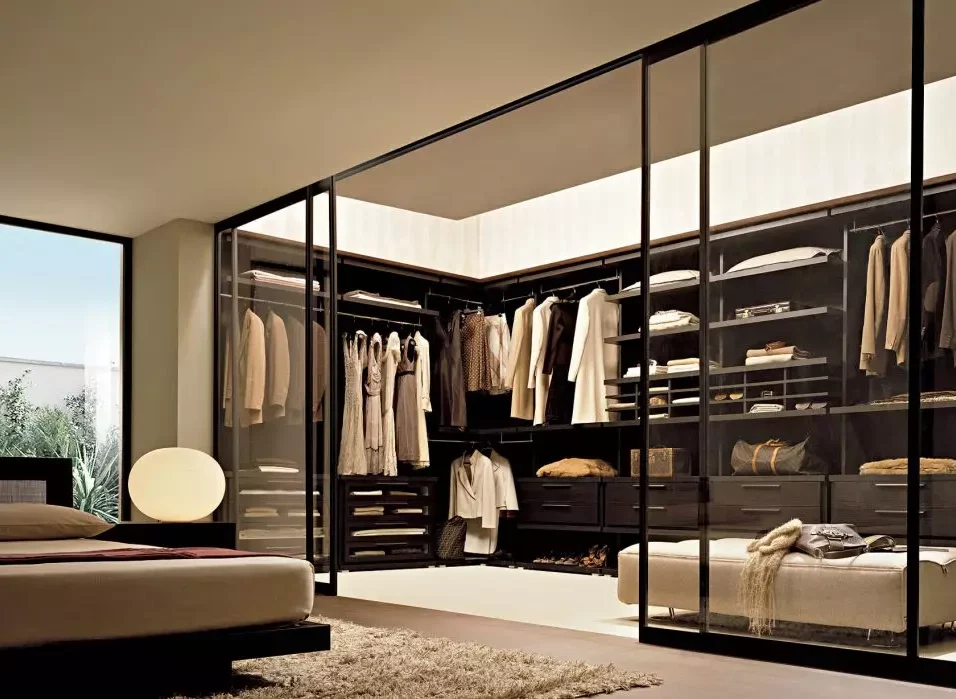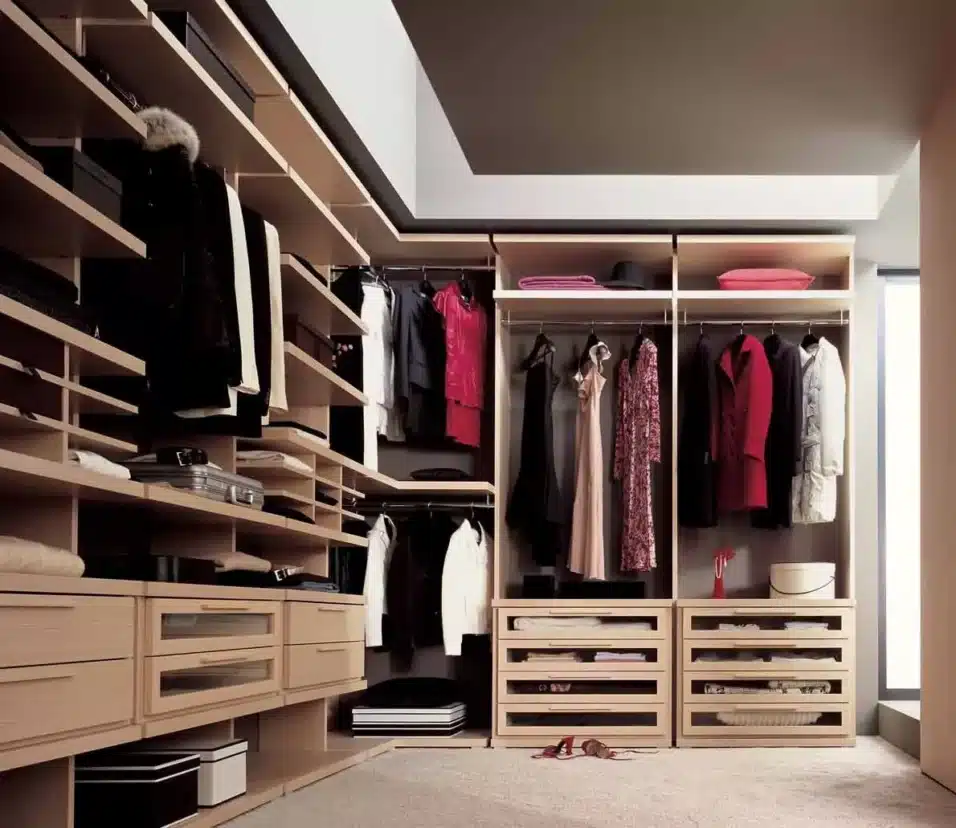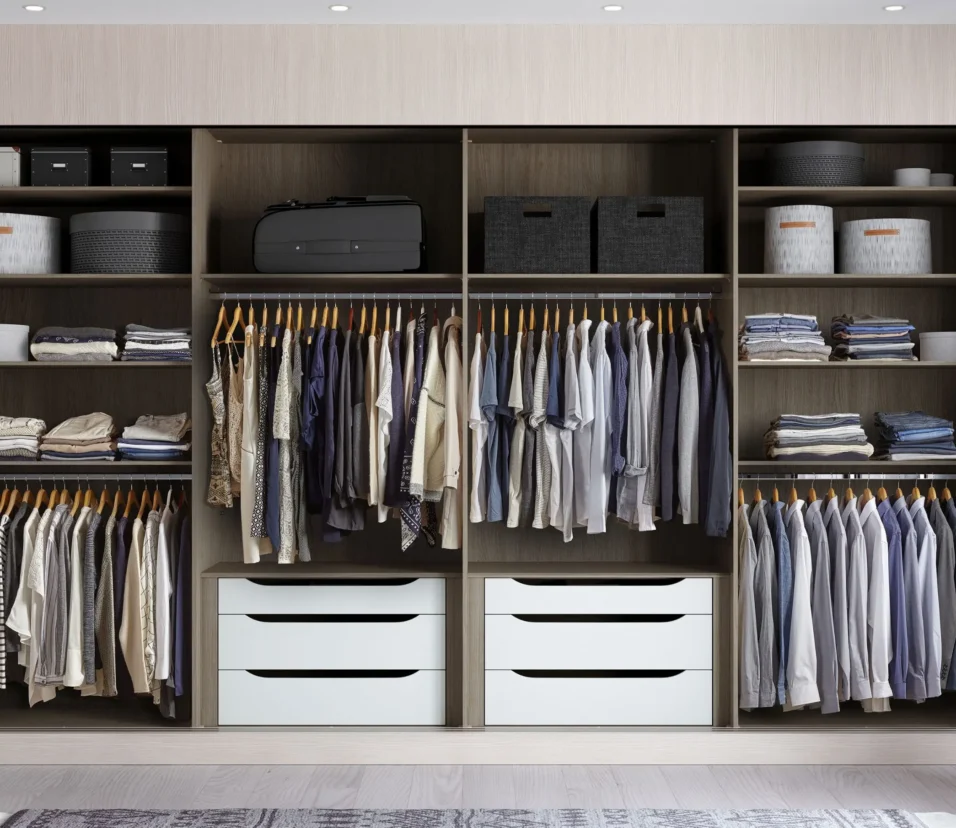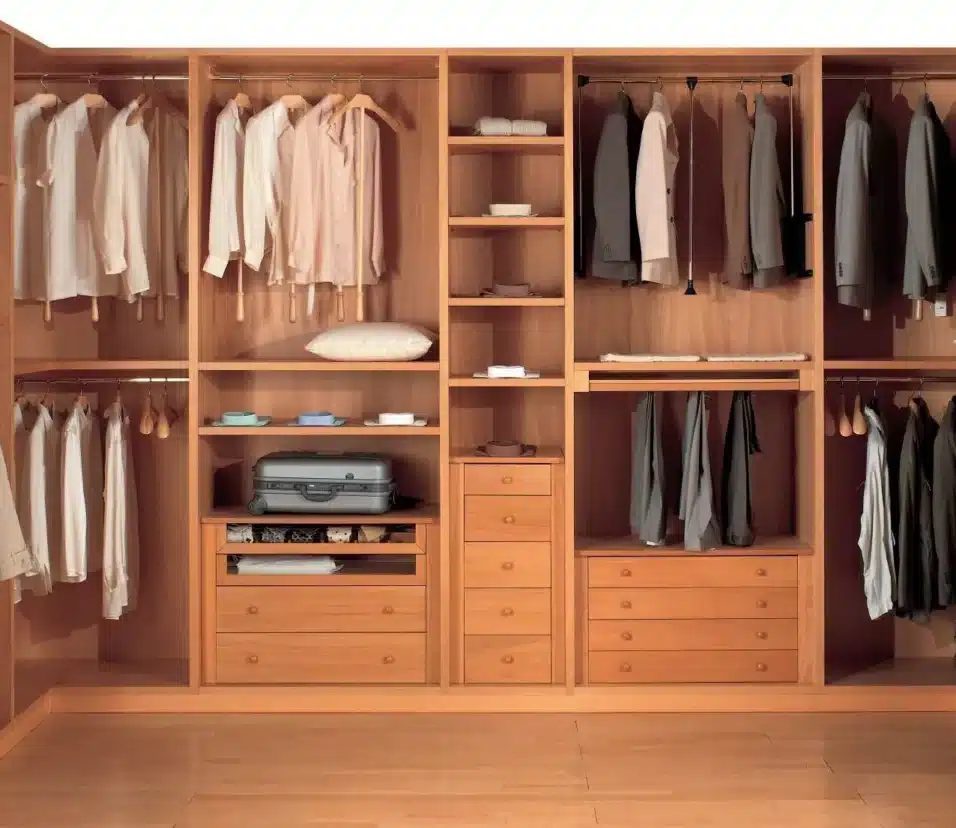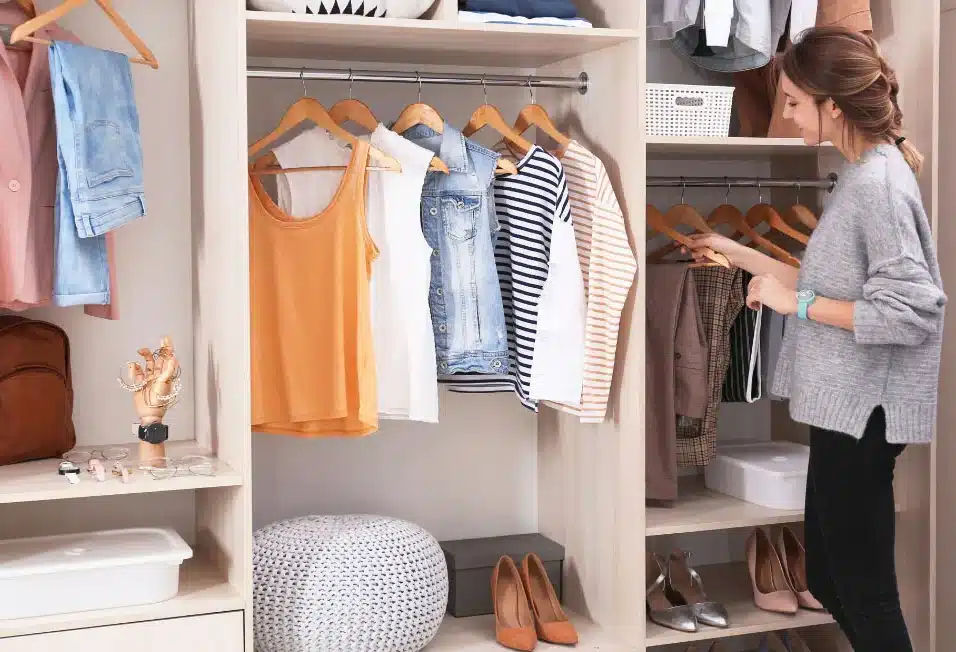How To Build A Wardrobe From Scratch
Introduction
How To Build A Wardrobe From Scratch: Building a wardrobe from scratch can be an exciting and daunting task. Whether you are starting fresh or looking to revamp your current style, creating a wardrobe that reflects your personality and meets your needs requires careful planning and consideration. In this article, we will explore the essential steps and tips to help you build a wardrobe that is both functional and stylish.
Firstly, it is important to assess your current wardrobe box and determine what items you already have that can be incorporated into your new wardrobe. Take inventory of your clothes, shoes, and accessories, and identify any gaps or items that no longer fit or suit your style. This will give you a clear idea of what you need to purchase and what can be repurposed or donated.
Next, consider your lifestyle and the occasions you typically dress for. Are you a working professional, a student, or someone who enjoys a casual lifestyle? Understanding your daily activities and the events you attend will help you prioritize the types of clothing you need.
Additionally, it is important to consider your personal style and the colors and patterns that you are drawn to. Building a wardrobe that reflects your individuality and makes you feel confident is key. Take some time to explore different fashion trends, browse magazines or online platforms for inspiration, and identify the styles that resonate with you. This will help you create a cohesive and personalized wardrobe that you will love wearing.
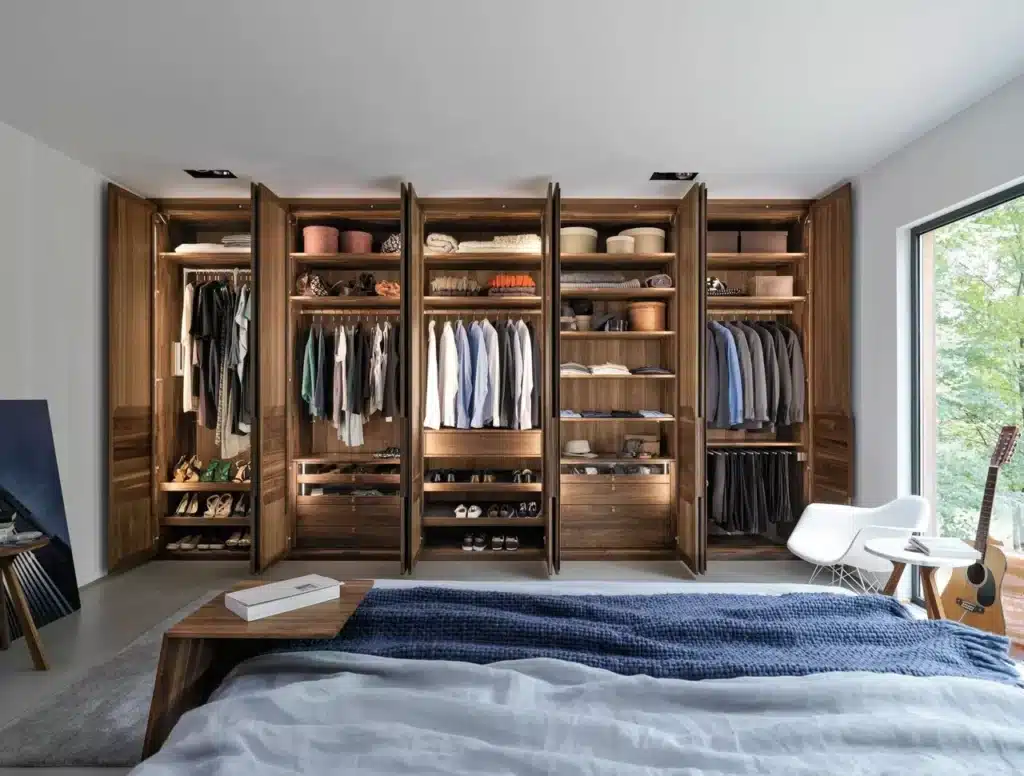
How to build a wooden wardrobe from scratch?
Building a wooden wardrobe from scratch can be a rewarding and fulfilling project for any DIY enthusiast. However, building a wooden wardrobe from scratch requires careful planning, precise measurements, and a good understanding of woodworking techniques.
Step 1: Design and Planning
The first step in building a wooden wardrobe from scratch is to design and plan the wardrobe. Consider the size and layout of the room where the wardrobe will be placed, as well as your storage needs. Sketch out a rough design of the wardrobe, including the dimensions and any additional features such as drawers or shelves.
Step 2: Gather Materials and Tools
Once you have a design in mind, gather all the necessary materials and tools for the project. This may include wood boards, screws, hinges, a saw, a drill, sandpaper, and a measuring tape. Make sure to choose high-quality materials that are suitable for the purpose and style of the wardrobe.
Step 3: Cut and Assemble the Frame
Next, cut the wood boards according to the dimensions of the wardrobe design. Use a saw to make precise cuts, and then assemble the frame of the wardrobe using screws and a drill. Make sure to double-check all measurements and ensure that the frame is sturdy and level.
Step 4: Add Doors and Finishing Touches
Once the frame is complete, add doors to the wardrobe using hinges. You can also add any additional features such as drawers or shelves at this stage.
What are the basics of building a wardrobe?
Building a wardrobe is an essential part of personal style and self-expression. It involves curating a collection of clothing and accessories that reflect your individuality and meet your everyday needs.
Firstly, it’s important to assess your lifestyle and the occasions you typically dress for. Are you a student, a working professional, or someone who enjoys a more casual lifestyle? Understanding your daily activities and the events you attend will help you determine the types of clothing you need.
Secondly, consider your personal style and the colors that suit you best. Are you drawn to classic, timeless pieces or do you prefer more trendy and fashion-forward items? Knowing your style preferences will guide your choices when building your wardrobe.
Next, focus on building a foundation of versatile and timeless pieces. These are the items that will form the core of your wardrobe and can be mixed and matched with other pieces. Examples of wardrobe basics include a well-fitting pair of jeans, a white button-down shirt, a little black dress, and a tailored blazer.
Additionally, invest in quality pieces that will stand the test of time. Look for well-made garments with durable fabrics and attention to detail.
How to build a wardrobe for cheap?
Building a wardrobe can be an exciting and fulfilling task, but it can also be quite expensive. However, with some careful planning and smart shopping, it is possible to build a wardrobe for cheap. By following a few key strategies, you can create a stylish and versatile wardrobe without breaking the bank.
Firstly, it is important to assess your current wardrobe and determine what items you already have that can be incorporated into your new wardrobe. Take inventory of your clothes, shoes, and accessories, and identify any pieces that can be mixed and matched with new items. This will help you avoid unnecessary purchases and save money.
Secondly, consider shopping at thrift stores, consignment shops, and online marketplaces for second-hand clothing. These places often have a wide selection of gently used items at a fraction of the cost of new clothing. You can find unique and stylish pieces that are still in great condition, allowing you to build a wardrobe that reflects your personal style without spending a fortune.
Thirdly, take advantage of sales, discounts, and promotions. Many retailers offer regular sales and discounts throughout the year, especially during holiday seasons. Keep an eye out for these opportunities and plan your shopping accordingly. Additionally, sign up for newsletters and loyalty programs to receive exclusive offers and coupons.
Furthermore, consider investing in timeless and versatile pieces that can be worn in multiple ways. Classic items such as a little black dress, a tailored blazer, or a pair of well-fitting jeans can be dressed up or down and paired with different accessories to create various looks. These pieces will not only save you money in the long run but also ensure that your wardrobe remains stylish and relevant for years to come.
How do you build a simple classic wardrobe?
Building a simple classic wardrobe is a great way to ensure that you always have stylish and timeless pieces to wear. Whether you’re starting from scratch or looking to streamline your existing wardrobe, there are a few key steps to follow in order to build a wardrobe that is both versatile and classic.
Firstly, it’s important to assess your current wardrobe and identify any gaps or items that need to be replaced. Take a look at what you already have and determine what pieces are missing or no longer in good condition. This will give you a starting point for building your new wardrobe.
Next, focus on investing in high-quality basics that will form the foundation of your wardrobe. These pieces should be versatile and timeless, such as a well-fitting pair of jeans, a classic white button-down shirt, and a tailored blazer. These items can be mixed and matched with other pieces to create a variety of different outfits.
Additionally, consider adding a few statement pieces to your wardrobe that reflect your personal style. These can be items such as a bold printed dress, a statement necklace, or a colorful handbag. These pieces will add interest and personality to your wardrobe, while still maintaining a classic and timeless overall look.
Another important aspect of building a classic wardrobe is to focus on quality over quantity. Instead of buying a large number of cheaply made items, invest in a few high-quality pieces that will last for years to come.
How to build a minimalist wardrobe?
Building a minimalist wardrobe is a great way to simplify your life and make getting dressed in the morning a breeze. A minimalist wardrobe consists of a small collection of high-quality, versatile pieces that can be mixed and matched to create a variety of outfits. By focusing on quality over quantity and choosing timeless, classic pieces, you can create a wardrobe that is both stylish and functional.
First and foremost, declutter your current wardrobe. Before you can start building a minimalist wardrobe, it’s important to take stock of what you already have. Go through your clothes and accessories and get rid of anything that you no longer wear or love. This will help you see what you have and make it easier to identify any gaps in your wardrobe.
Next, identify your personal style. Building a minimalist wardrobe is all about curating a collection of pieces that reflect your personal style. Take some time to think about the types of clothes you feel most comfortable and confident in. Do you prefer a more casual, laid-back style or do you gravitate towards more polished and tailored pieces? Once you have a clear idea of your personal style, it will be easier to choose pieces that you will love and wear for years to come.
Invest in high-quality basics.
The foundation of a minimalist wardrobe is a collection of high-quality basics that can be worn in a variety of ways. Look for pieces that are well-made and made from durable fabrics. Classic items like a white button-down shirt, a well-fitting pair of jeans, and a versatile blazer are all great starting points.
Choose versatile pieces that can be mixed and matched. One of the key principles of a minimalist wardrobe is versatility. Look for pieces that can be worn in multiple ways and paired with different items in your wardrobe. For example, a simple black dress can be dressed up with heels and statement jewelry for a night out or dressed down with sneakers and a denim jacket for a more casual look. By choosing versatile pieces, you can create a variety of outfits with a smaller number of items.
When building a wardrobe from scratch, it is important to start with the essential clothing items that form the foundation of any outfit. These items include a well-fitting pair of jeans, a versatile little black dress, a tailored blazer, a white button-down shirt, a classic trench coat, and a comfortable pair of sneakers.
In addition to these basics, it is also important to have a few quality t-shirts, a cozy sweater, a versatile skirt, a pair of black trousers, a statement accessory, and a pair of heels in your wardrobe. These items can be used to add variety and personal style to your outfits.
How can one determine their personal style when building a wardrobe?
When building a wardrobe, it is important to determine your personal style to ensure that the clothing items you choose truly reflect your personality and make you feel confident. One way to determine your personal style is by taking inspiration from various sources such as fashion magazines, social media influencers, and even celebrities. Look for outfits or pieces of clothing that catch your eye and resonate with you. Pay attention to the colors, patterns, and silhouettes that you are drawn to.
Another way to determine your personal style is by assessing your lifestyle and the activities you engage in on a daily basis. Consider the occasions you typically dress for, whether it’s work, casual outings, or special events. This will help you identify the types of clothing items that are practical and necessary for your wardrobe. Additionally, think about the image you want to portray and the message you want your clothing to convey. Are you more drawn to classic and timeless pieces, or do you prefer bold and trendy styles
What are some budget-friendly options for building a wardrobe from scratch?
Building a wardrobe from scratch can be an exciting but daunting task, especially if you’re on a budget. However, there are several budget-friendly options that can help you create a stylish and versatile wardrobe without breaking the bank.
1. Thrift stores and consignment shops: These are great places to find unique and affordable clothing items. You can often find high-quality pieces at a fraction of the original price. Take your time to browse through the racks and try on different items to find hidden gems that fit your personal style.
2. Online marketplaces and second-hand websites: With the rise of online shopping, there are now numerous platforms where you can buy and sell pre-loved clothing. Websites like Poshmark, Depop, and ThredUp offer a wide range of options at discounted prices. You can also sell your own gently used items to make some extra cash for new additions to your wardrobe.
3. Sales and discounts: Keep an eye out for sales and discounts at your favorite stores. Sign up for their newsletters or follow them on social media to stay updated on any promotions. Many retailers offer seasonal sales, clearance events, or special discounts for new customers. Take advantage of these opportunities to snag some great deals on essential wardrobe items.
Are there any specific tips or strategies for organizing and maintaining a wardrobe?
Organizing and maintaining a wardrobe is essential for keeping your clothing items in good condition and ensuring that you can easily find what you need. Here are some tips and strategies to help you stay organized:
1. Declutter regularly: Start by going through your wardrobe and getting rid of any items that you no longer wear or that are damaged beyond repair. This will help you create more space and make it easier to organize your remaining clothing.
2. Categorize your clothing: Sort your clothing into categories such as tops, bottoms, dresses, and outerwear. Within each category, you can further organize by color or style. This will make it easier to find specific items when you need them.
3. Invest in storage solutions: Consider purchasing storage bins, hangers, and dividers to help keep your clothing organized. Use clear bins or labels to easily identify what is inside each container. Utilize vertical space by using hanging organizers or shelves.
4. Rotate your clothing seasonally: This will free up space for the current season’s clothing and make it easier to find what you need.
5. Maintain a regular cleaning routine: Regularly clean and care for your clothing items according to their specific care instructions. This will help prolong their lifespan and keep them looking their best. Additionally, make it a habit to put away clean laundry immediately to prevent clutter from accumulating.
By following these tips and strategies, you can keep your wardrobe organized and maintain your clothing items in good condition.
How can one incorporate trends and personal preferences when building a wardrobe from scratch?
Another way to incorporate trends and personal preferences is by experimenting with different styles and silhouettes. Don’t be afraid to try new things and step out of your comfort zone. This can be done by adding statement pieces or unique accessories that reflect your personal style and add a touch of individuality to your wardrobe.

Conclusion
Building a wardrobe from scratch can be a daunting task, but with the right approach and some careful planning, it is definitely achievable. By following the steps outlined in this guide, you can create a versatile and stylish wardrobe that suits your personal style and lifestyle. Remember to start with the basics, such as a few well-fitting jeans, t-shirts, and a versatile jacket. From there, you can gradually add more pieces that reflect your individual taste and preferences.
One of the key aspects of building a capsule wardrobe from scratch is investing in quality pieces that will stand the test of time. While it may be tempting to opt for cheaper, fast-fashion items, it is important to remember that these pieces often lack durability and may need to be replaced frequently. Instead, focus on investing in timeless classics that can be worn season after season. This not only saves you money in the long run but also helps to reduce your environmental impact.
A wardrobe from scratch requires careful planning, investment in quality pieces, and a focus on versatility. By starting with the basics and gradually adding pieces that reflect your personal style, you can create a wardrobe that is both functional and stylish. Remember to choose quality over quantity and opt for versatile pieces that can be mixed and matched to create a variety of different outfits. With these tips in mind, you can confidently build a wardrobe that suits your individual needs and preferences.



